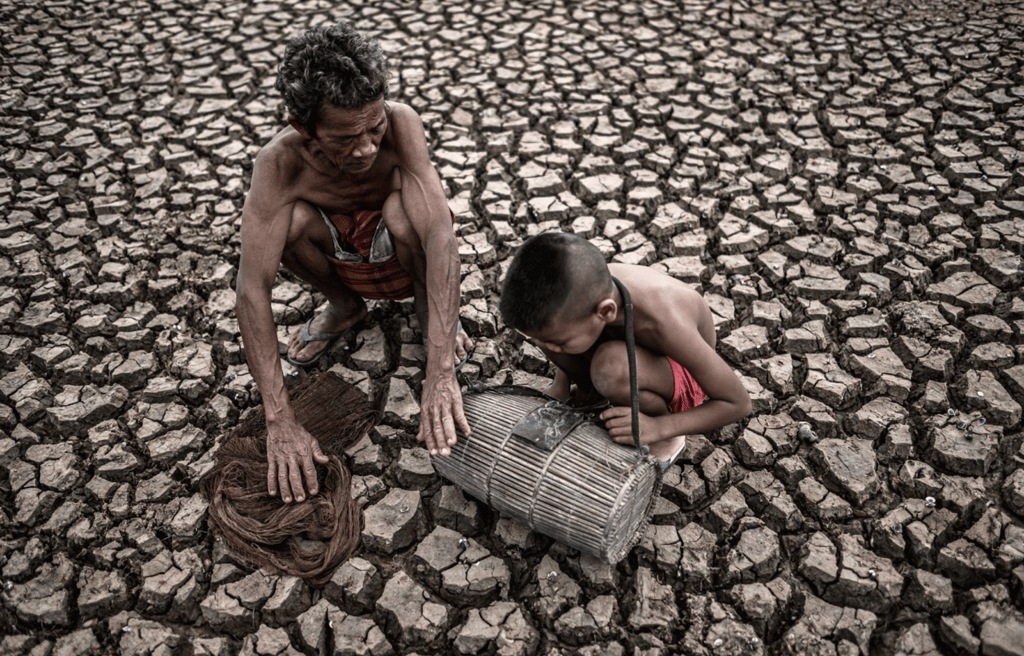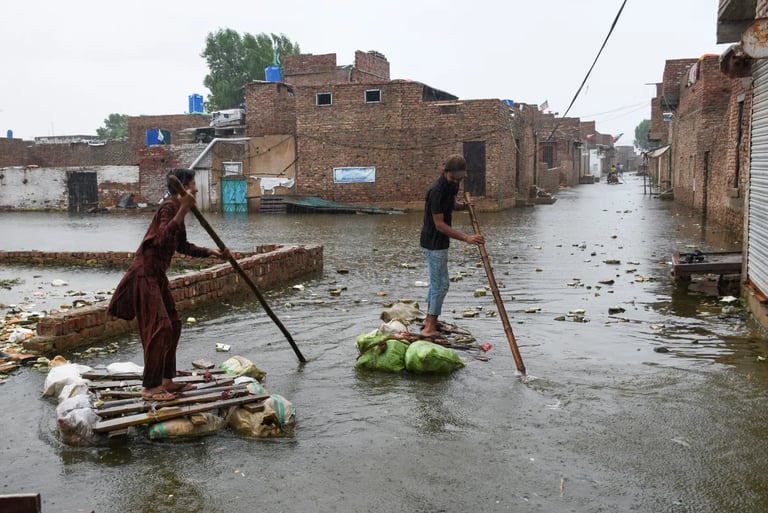Climate Change and the Refugee Crisis
The nearly 32 million displacements caused by weather-related hazards in 2022 represent a 41 percent increase compared to 2008 levels.


Climate refugees are people who get displaced due to climate change and other anomalies related to it. These anomalies can include anything from more frequent and extreme weather events, such as droughts, floods, and cyclones, to large-scale issues, such as rising sea levels, affecting the global coastal communities as a whole. The nearly 32 million displacements caused by weather-related hazards in 2022 represent a 41 percent increase compared to 2008 levels. Such events never come alone and are almost always accompanied by disruptions in food systems, loss of livelihood, and conflict over resources, which further exacerbate the situation, increasing the possibility of displacement.
Such weather-related hazards never come alone and are almost always accompanied by disruptions in food systems, loss of livelihood, and conflict over resources, which further exacerbate the situation, increasing the possibility of displacement. Thus, climate change is not only a direct driver of displacement but also a ‘threat multiplier’. This also shows the interconnectedness of factors leading towards the displacement of individuals. For example, in northern Cameroon in 2021, hundreds of people were killed, and tens of thousands fled to neighbouring Chad following violence between herders and fishermen that was sparked by dwindling water resources linked to climate change.
The UN’s definition of a refugee is someone who has crossed an international border due to a “well-founded fear of being persecuted for reasons of race, religion, nationality, membership of a particular social group or political opinion” or conflicts and “events seriously disturbing public order.” Climate refugees are technically not refugees. According to UNHCR, many people fleeing the effects of climate change do not leave their own country and generally migrate based on climate events alone without the existence of any fear of persecution, it is more accurate to refer to ‘persons displaced in the context of disasters and climate change’ or ‘climate migrants’ and ‘environmental migrants.’ It is because of this difference in the nature of a climate refugee and a refugee that the people displaced due to climate change do not get the same rights as a refugee and hence, historically, ‘climate refugees’ remain excluded and unprotected within legal refugee frameworks like the 1951 Convention Relating to the Status of Refugees and its 1967 Protocol. However, in October of 2020, the UNHCR published a set of legal considerations regarding claims for international protection made in the context of the adverse effects of climate change and disasters. This document lays down situations in which climate refugees can claim international protection.
The Institute for Economics and Peace estimates that, by 2050, there will be 1.2 billion people displaced around the world due to climate change and related disasters. If the global population reaches 9.9 billion by 2050, as predicted, that will mean 12% of the world will be climate migrants. The World Bank also released a report in 2022 estimating over 200 million environmental migrants over the next thirty years. Even after the universality and the grave nature of this issue, the difficulties of climate refugees are often ignored, hence giving them to be labelled as ‘the world’s forgotten victims,’ or ‘the refugees the world barely pays attention to.’ All this shows why there is a pressing need to grant more legal recognition and protection to this vulnerable part of society.
Image courtesy of Oakland Images
According to the Global Report on Internal Displacement (GRID) 2023 by the Internal Displacement Monitoring Centre and Norwegian Refugee Council, 53% of Internal Displacement in 2022 was triggered by disasters, of which weather-related hazards such as floods, droughts, and storms constituted 98%. The report also stated key displacement situations, which highlighted how 25% of global disaster displacements were triggered by monsoon flooding in Pakistan, while 1.1 million movements were recorded in Somalia as the country experienced its worst drought in 40 years.


Image courtesy of Yasir Rajput/Reuters
